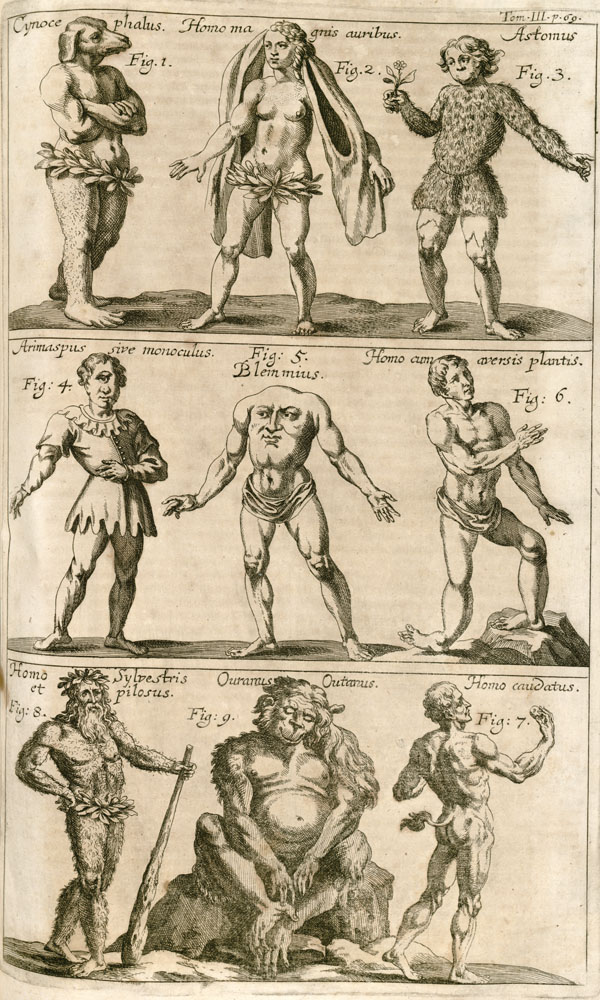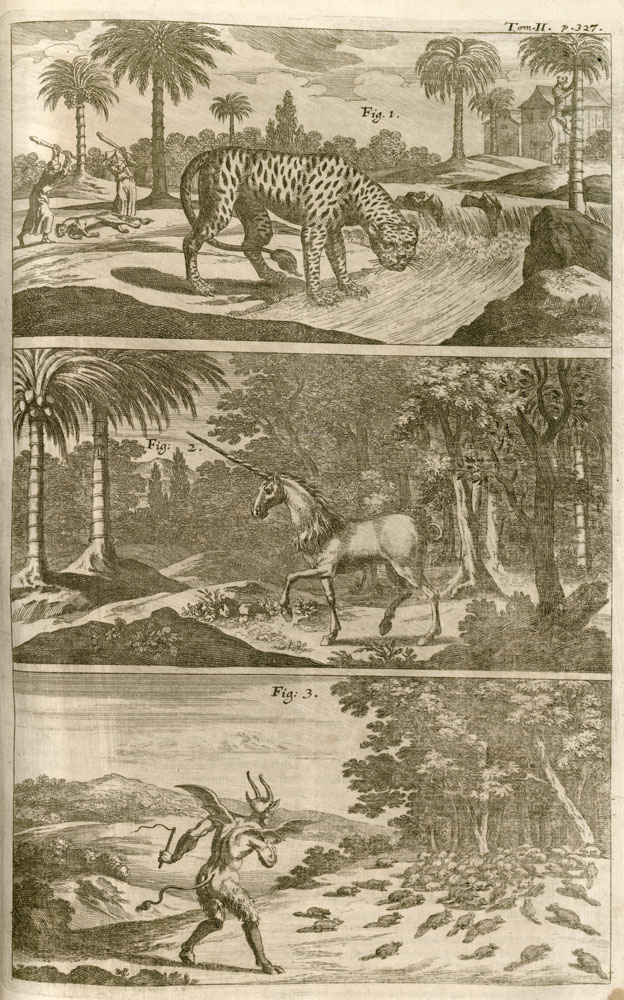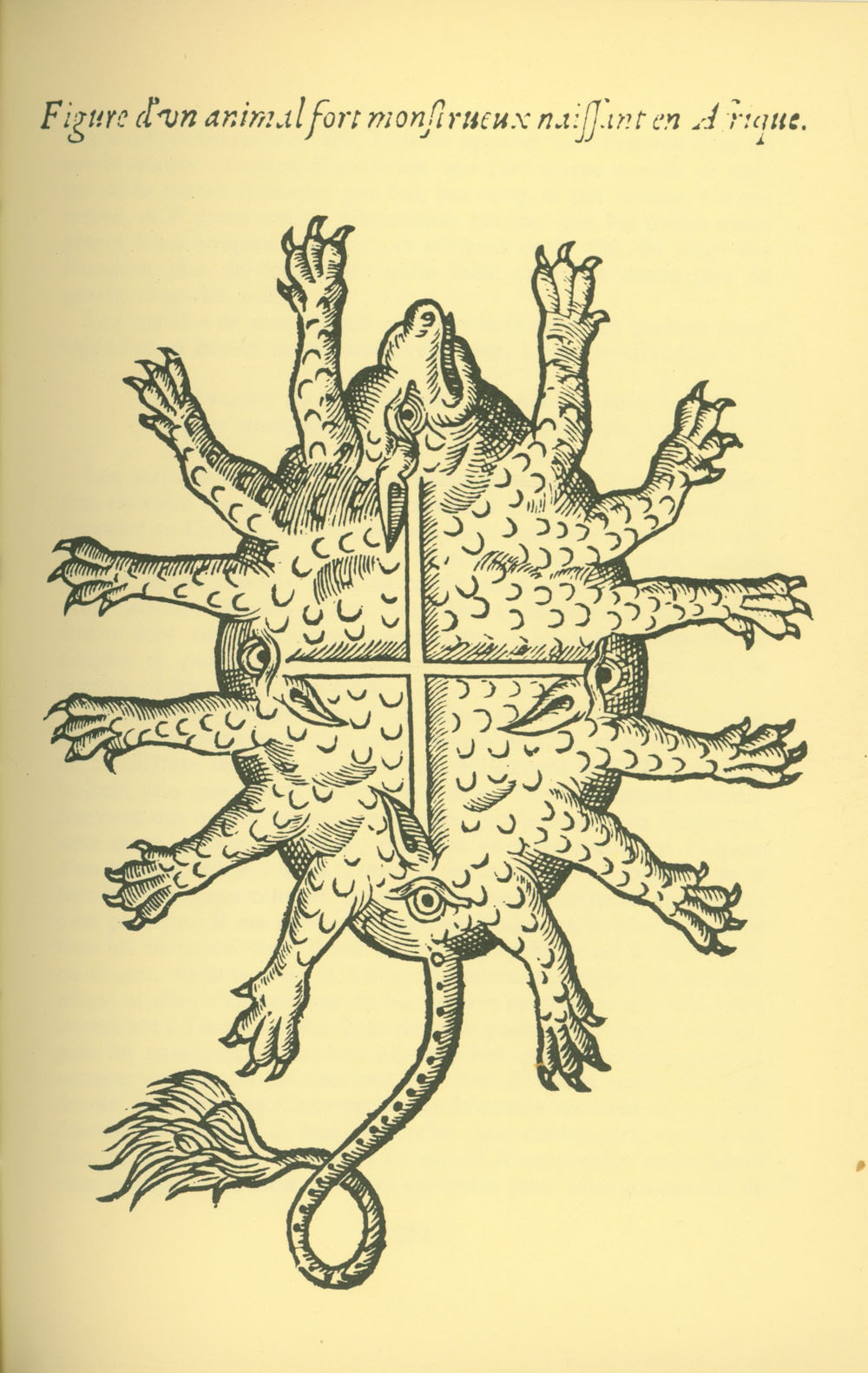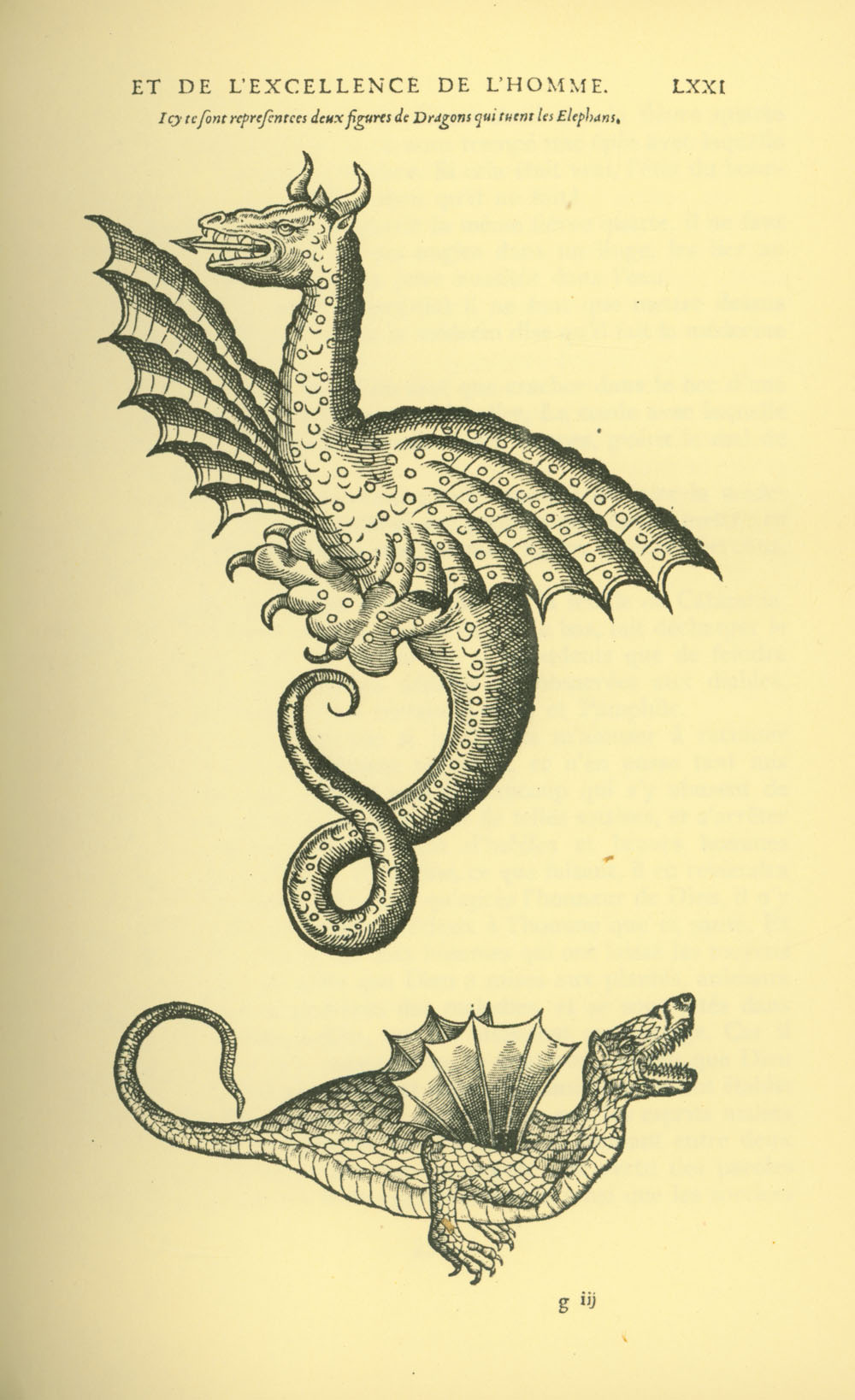Occult Science and the Philosophy of the Renaissance
Johann Zahn. Specula Physico-Mathematico-Historica Notabilium ac Mirabilium Sciendorum. Nuremberg: Johann Christoph Lochner, 1696.
McIlhenny Q155 .Z3 Flat

 Johann Zahn, a seventeenth-century German cleric best known for his experiments with optics, believed that demons were an active force in the world and could inhabit or influence plants and animals. In the mammoth cabinet of historical and scientific curiosities shown here, he cites numerous examples of demonic forces at work in nature, such as the case of Slovenian dormice who, according to Zahn, met with the devil underground and bore his signatures on their ears.
Johann Zahn, a seventeenth-century German cleric best known for his experiments with optics, believed that demons were an active force in the world and could inhabit or influence plants and animals. In the mammoth cabinet of historical and scientific curiosities shown here, he cites numerous examples of demonic forces at work in nature, such as the case of Slovenian dormice who, according to Zahn, met with the devil underground and bore his signatures on their ears.
Zahn also included illustrations of giant snakes, a unicorn, and more than a dozen quasi-human figures with wings, snouts, tails, claws, and double heads. A chronology, beginning in the year 123 and ending in 1692, lists dozens of examples of “monstrous” births. Although clearly cases of severe birth defects, it is easy to imagine how reports of such cases were exaggerated in the retelling.
Konrad Gesner. Historiae Animalium, Lib. I de Quadrupedibus. Zurich: Christoph Froschauer, 1551.
McIlhenny QL41 .G37 vol. 1 Flat
Konrad Gesner (1516-1565) was a Swiss naturalist and bibliographer. His encyclopedic work Historiae Animalium (Histories of Animals) is considered the first work of modern zoology. Gesner was a forward-looking scientist who based many of his observations on dissections and detailed reports from travelers. On the whole, he made a conscious effort to distinguish fact from fiction.
That said, Historiae Animalium includes a great deal of folklore, and we find references to mythical creatures throughout the book. In his chapter on reptiles, for example, Gesner wrote about the medicinal value of dragon fat, which was said to be a sure remedy for ulcers. Unicorn horn was believed to be an antidote for poisons, and many apothecaries in Gesner’s day claimed to stock it. Like the influential French surgeon Amboise Paré, Gesner was skeptical about the unicorn’s existence. “Stories about the medicinal values of a unicorn’s horn,” he wrote, “may have originated from similar Asian beliefs about the rhinoceros horn.” No amount of skepticism, however, could dissuade Gesner from including a woodcut of the fabled animal in his volume on quadrupeds, displayed here.
Woodcuts from Ambroise Paré. Des Monstres, Des Prodiges, Des Voyages. Paris: Livre Club du Libraire, 1964.
Rare Laughlin QM690 .P37 1964

 The French surgeon Ambroise Paré (ca. 1510-1590) is credited with the invention of many modern surgical procedures. Yet despite his forward thinking, Paré, like his Swiss contemporary Konrad Gesner, was not entirely free of the superstitious beliefs of his time. In this work on monsters and “freaks of nature,” for example, he discusses the medicinal values of mythical creatures such as mermaids, unicorns, dragons and various types of sea serpents.
The French surgeon Ambroise Paré (ca. 1510-1590) is credited with the invention of many modern surgical procedures. Yet despite his forward thinking, Paré, like his Swiss contemporary Konrad Gesner, was not entirely free of the superstitious beliefs of his time. In this work on monsters and “freaks of nature,” for example, he discusses the medicinal values of mythical creatures such as mermaids, unicorns, dragons and various types of sea serpents.
As funny as Paré’s treatment methods may seem to modern audiences, the “medicine” practiced at this time often cost patients their lives. In 1565, Paré experimented with the curative properties of bezoar stones (a scientific name for hairballs). At the time, bezoar was believed to be an antidote to poison. Paré was unconvinced, but to test the theory, he found a cook who had been sentenced to death for stealing silver cutlery. The thief, realizing he had nothing to lose, agreed to let Paré poison him and then see whether he could be cured using bezoar. If he survived, he would be allowed to go free. The stone, of course, didn’t work, and the cook died.
John Jonston. Beschrijving van de Natuur der Viervoetige Dieren. Amsterdam: J. J. Schipper, 1660.
Rhoades uncataloged
John Jonston (1603-1675) was a Polish scholar born to a family of Scottish origin. He spent most of his life in Poland, working as an academician and private tutor. Though he traveled widely throughout Europe, Jonston repeatedly turned down offers of professorships at major universities. Instead, he chose to live a private life on his country estate in southwest Poland.
One of Jonston’s works, Historia Naturalis (Natural History), was translated into many languages. The engraving shown here has been reproduced from a Dutch edition. To an even greater extent than Konrad Gesner’s encyclopedia, Jonston’s includes full-page illustrations of mythical animals, including dragons, basilisks, sea serpents, the “many-headed hydra,” and several species of unicorn.
